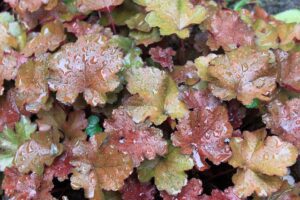In this guide, we’ll explore the best annual flowers to plant with hostas, complete with insights into each flower’s characteristics, benefits, and potential design uses in your garden.
Impatiens
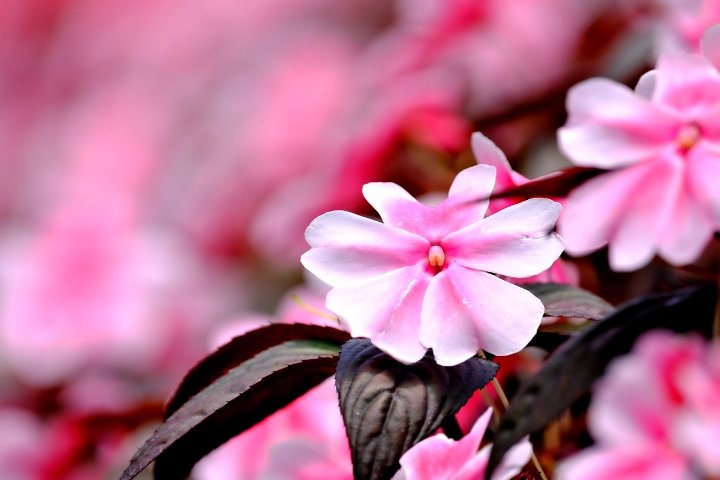
Impatiens are often regarded as the go-to annual for shaded areas, thanks to their vibrant blooms and ability to thrive in low-light conditions. They come in a dazzling array of colors including shades of pink, red, white, and purple, making them the perfect partner for the rich greens of hostas. The bushy growth habit of impatiens makes them ideal for filling in gaps between hostas or for creating a carpet of color beneath their foliage.
Furthermore, impatiens thrive in moist, well-drained soil, so planting them alongside hostas—whose watering needs are likewise—ensures a harmonious garden environment. To elevate your design, consider using impatiens in mixed borders or as a low layer around taller hostas. Their prolonged blooming period means that they will continuously provide color and vibrancy throughout the growing season, making them a favorite for many gardeners.
Begonias

Begonias add an extra layer of beauty alongside hostas with their stunning, waxy-leaved appearance and colorful blooms. These plants are resilient and come in several varieties, such as fibrous and tuberous types, each offering unique ornamental characteristics. Depending on the variety, the flowers can be found in hues of pink, red, orange, and white, providing ample choices to suit your garden’s color scheme.
Hostas and begonias thrive in similar conditions, with a preference for shady, humid environments. This makes them ideal companion plants. The glossy leaves of begonias create a striking contrast against the textured foliage of hostas, lending a luxurious feel to any garden space. Additionally, if you are looking for an easy-care option, begonias are relatively low-maintenance, requiring only regular watering and occasional fertilization. Pair them in groups for a stunning, impactful display or scatter them among hostas for an effortless, natural look.
Coleus
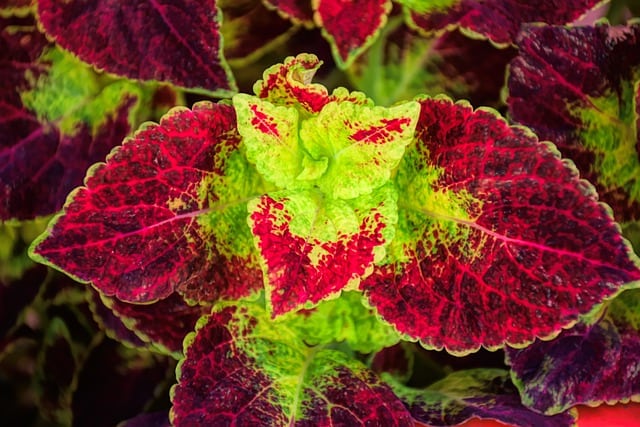
While coleus is primarily appreciated for its stunning foliage, its vibrant leaves make it an excellent addition to any garden that features hostas. The variety of leaf shapes and colors—from deep purples to vibrant yellows and even intricate patterns—can create a lively backdrop against the solid hues of hostas. Coleus thrives in partial to full shade, which aligns perfectly with the light conditions enjoyed by hostas.
Coleus can be used to elevate the visual interest in your garden by layering different colors and sizes. For instance, planting taller varieties behind shorter hostas can create depth and drama. Moreover, these plants are quite forgiving and tolerant, allowing them to flourish even in less than ideal soil conditions. The artistic potential of coleus is boundless and adds a unique flair, making it an indispensable partner for any hosta garden.
Calibrachoa
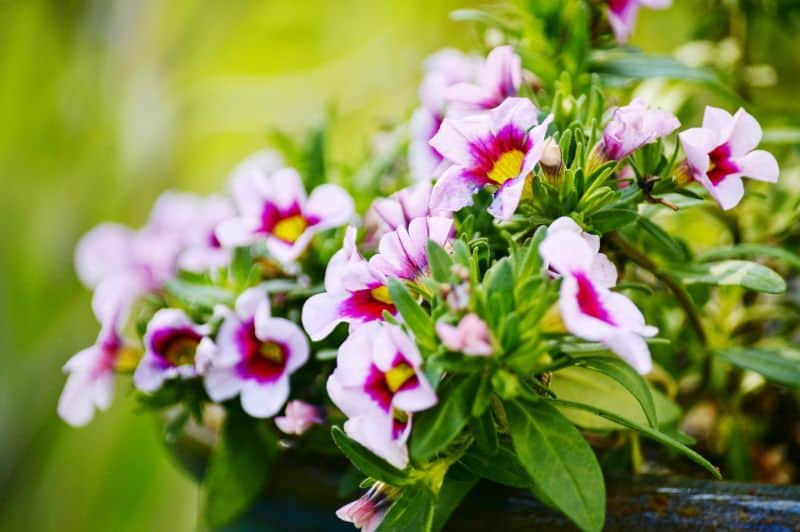
Often referred to as million bells, calibrachoa are small but mighty annuals known for their colorful, trumpet-shaped flowers that bloom profusely from spring to frost. While they flourish in full sun, they can adapt to partial shade, making them a versatile companion to hostas positioned in dappled light. The cascading growth habit of calibrachoa makes them perfect for hanging baskets or as a trailing border around hostas, softening the overall landscape.
The range of colors available in calibrachoa—from yellows to pinks and purples—creates delightful contrasts and harmonies among hostas. Their resilient nature and continuous blooming throughout the season ensure that your garden will stay vibrant and captivating. Calibrachoas are also relatively low-maintenance, requiring moderate watering and minimal deadheading, making them perfect for busy gardeners.
Marigolds
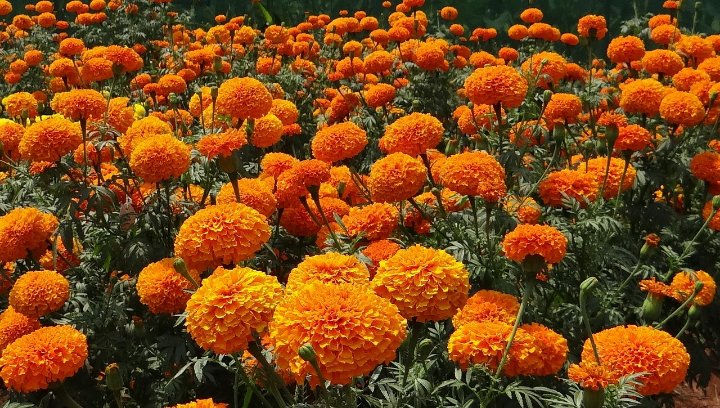
Marigolds are cherished not just for their bright, sunny blooms but also for their pest-repelling properties. These annuals thrive in full sun but can flourish if strategically placed near hostas that enjoy partial shade. With their rich colors—varying from bright yellows to deep oranges—marigolds can add a joyful vibrancy next to the cool tones of hostas.
In addition to their aesthetic benefits, marigolds are excellent for attracting pollinators such as bees and butterflies, which can help promote the health of all plants in the garden, including hostas. These hardy flowers provide excellent cut flowers, too, making them a dual-purpose plant. When combined, marigolds and hostas create a bounty of color, texture, and life in your garden.
Nasturtiums
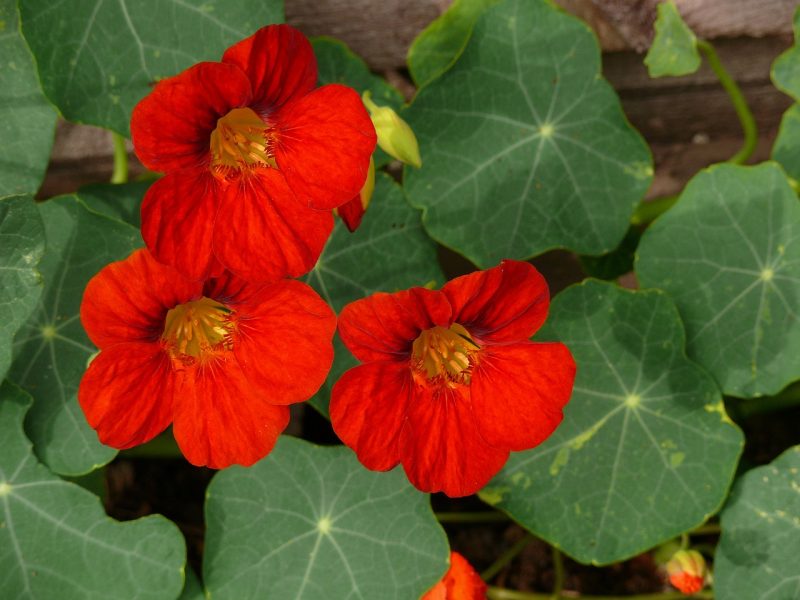
Nasturtiums are both a culinary delight and a delightful annual flower. With their bright, saucer-shaped flowers in shades of orange, red, and yellow, they create an appealing contrast with the broad leaves of hostas. Growing well in well-drained soil and enjoying sun to partial shade, nasturtiums can be planted at the base of hostas or trained to climb up trellises, thus enhancing vertical interest.
Aside from their vibrant beauty, nasturtiums are entirely edible, making them a unique addition to your garden. The peppery flavor of their leaves and blossoms can enrich salads and dishes, adding both flavor and color. Planting nasturtiums alongside hostas offers not only an attractive visual element but also increases the garden’s biodiversity, inviting beneficial insects and enhancing the overall health of your garden ecosystem.
Pansies
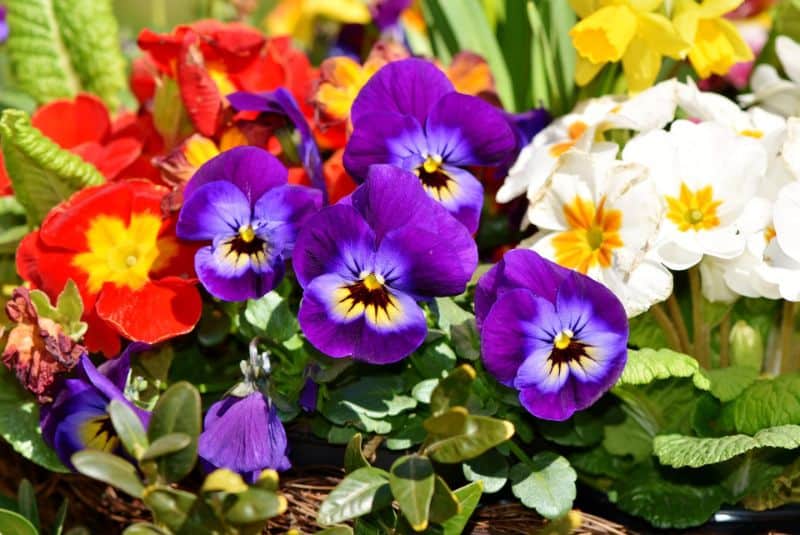
Pansies are recognized for their charming blooms and distinctive “faces.” These cheerful flowers come in a broad spectrum of colors, making them a favorite for adding splashes of brightness to shaded areas of the garden. They prefer cooler weather and can tolerate light frost, which enables them to bloom in early spring and fall, providing seasonal charm alongside hostas.
When paired together, pansies can act as a colorful border or filler between hostas, bringing a burst of color that complements the lush greens. Their resilience makes them an ideal choice for creating stunning pots or garden beds that will dazzle throughout the growing season. The delightful charm of pansies will not only enhance your hosta garden aesthetically but will also lift your spirits as you enjoy their lovely blooms.
Petunias
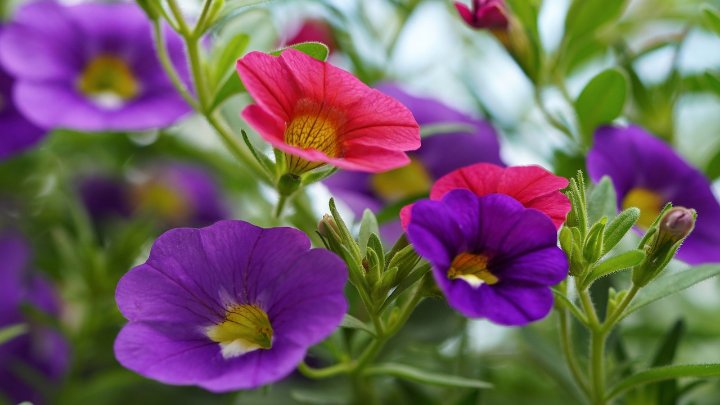
Petunias are prized for their abundant and varied blossoms, making them a perfect addition to any garden. They come in many colors, and their ability to thrive in full sun or partial shade allows for flexibility in design. When planting petunias near hostas, consider the contrast in height—petunias can be allowed to spill over the edges of containers or hanging baskets to create a stunning layered effect.
These flowers are extremely low-maintenance and will bloom continuously when deadheaded regularly. Not only do they provide vibrant colors, but they also attract pollinators, which can help your hostas thrive. Planting petunias in clusters or as accents among hostas creates a gorgeous visual narrative that changes with the seasons, ensuring a lively and colorful garden throughout the year.
Snapdragons
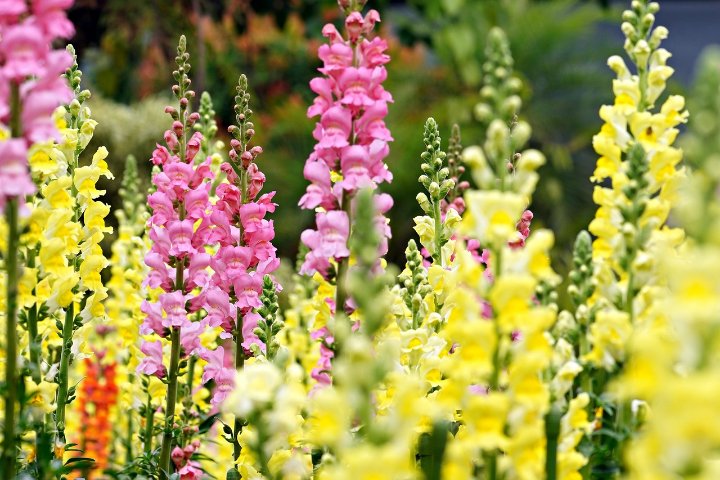
With their tall, spiky flowers, snapdragons add a vertical element to any garden that will beautifully juxtapose the low-growing hostas. Available in an array of colors, snapdragons are great options for livening up shady borders or adding height to a layered garden scheme. They prefer cooler weather and thrive particularly well in spring and fall, making them suitable companions in climates that experience temperature fluctuations.
When placing snapdragons alongside hostas, their height can create a focal point that draws the eye upward, directing attention towards the upper parts of the garden. They are also quite tolerant of drought once established, making them relatively easy to care for. The whimsical, dragon-like blooms foster an enchanting garden atmosphere, ensuring your space is as inviting as it is beautiful.
Zinnias

Zinnias are a striking choice for those seeking to brighten their garden with cheerful, bold colors. Known for their resilience and adaptability, these annuals can thrive in a range of conditions, though they do prefer full sun. When planting zinnias near hostas, consider areas where the hostas rise taller, allowing the vibrant zinnias to stand out against the lush background.
Available in various heights and colors, zinnias can create a stunning display when varied sizes are intermingled with hostas. Their long-lasting blooms make them perfect for cutting and bringing indoors, providing color to your home as well. The joy of zinnias lies not only in their appearance but also in their ability to attract butterflies, enhancing the overall biodiversity and vibrancy of your garden.
Lobelia
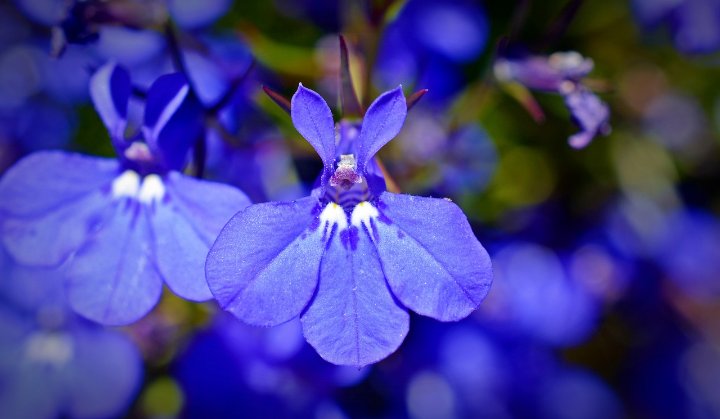
For a softer, more delicate touch in the garden, lobelia provides an exquisite contrast alongside hostas. Known for their trailing nature and quaint flowers, lobelia comes in beautiful shades of blue, purple, and white. They thrive best in fertile, moist, well-drained soil and bright to partially shady conditions—a perfect match for hostas.
Lobelia’s sprawling habit makes them perfect for creating lovely ground cover or spilling over the sides of hanging baskets. When planted near hostas, they soften the garden edge and create a flowing, ethereal effect. Their long blooming period from spring to fall makes them a reliable companion, ensuring that your garden remains vibrant and lively throughout the entire growing season.
Chinese Lanterns (Physalis)
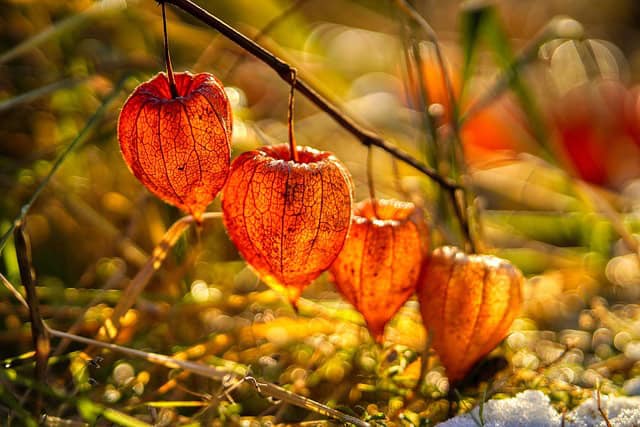
Chinese lanterns bring a unique aesthetic to a garden with their distinctive, papery husks that turn bright orange in the fall, mimicking lanterns. This unusual characteristic adds intriguing visual interest, especially when planted alongside hostas. While Chinese lanterns prefer full sun, they can tolerate some shade, making them a wonderful option for planting alongside hostas amid dappled light.
The bright hues of their husks against the lush greens of hosta leaves create a stunning seasonal display, drawing the eye even in late summer and fall. They can spread quite a bit, so it’s ideal to have them in a contained area to prevent unwanted growth. The charming look of Chinese lanterns, complemented by the placid presence of hostas, makes for an enchanting garden scheme that provides year-round intrigue.
Verbena
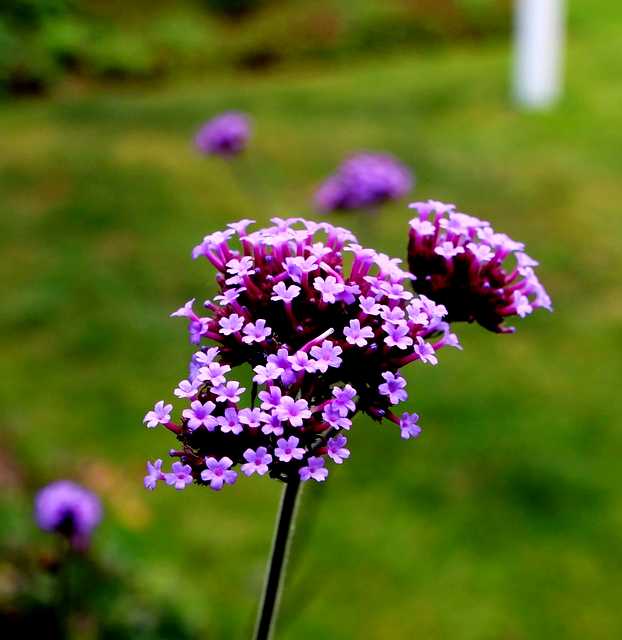
Verbena stands out for its prolific blooming abilities and long-lasting nature, making it a great ally for hostas. With clusters of small flowers in shades of purple, pink, and white, verbena creates a visually stunning canvas layered nicely with the foliage of hostas. It prefers full sun but can adapt to partial shade, allowing for creative planting options in your garden.
Their trailing growth habit makes them ideal for hanging baskets, window boxes, or as a ground cover. When placed alongside hostas, verbena’s cascading blooms can soften the edges and create beautiful draping effects. The diverse colors and textures of verbena will add depth and continuity to your garden design, ensuring a vibrant and cheerful ambiance throughout the season.
Ageratum

Ageratum, known for its fluffy clusters of flowers, adds a soft touch to any shade garden. With its cloud-like blooms in shades of blue, purple, and white, this delicate annual makes a perfect companion for hostas. Ageratum prefers well-drained soil and thrives in shaded to partially sunny conditions, aligning well with the needs of hostas.
When planted alongside hostas, ageratum creates a peaceful visual display that is both elegant and inviting. The gentle movements of its flowers in the wind add an element of grace to the garden. Plus, its ability to bloom continuously from late spring to frost ensures a long-lasting show of color. Ageratum’s soft texture and vibrant colors can bring a sense of tranquility and beauty to your outdoor oasis.
Cosmos

Cosmos are possibly one of the most striking additions you can make, with their airy, delicate blooms that can reach impressive heights. Ranging from pink to white, with some varieties showcasing vibrant reds, cosmos thrive in sunny conditions but can also tolerate partial shade. This adaptability makes them ideal candidates for planting alongside hostas in gardens that experience varying light levels.
The height of cosmos provides an exhilarating vertical element that contrasts nicely with the broad, low hosta leaves. Their long blooming season ensures that they’ll stand tall and proud, creating an engaging focal point in the garden. Additionally, cosmos are known for attracting butterflies, adding movement and life to your garden. By pairing them with hostas, you can create a stunning combination that is both functional and beautiful, with layers of colors, shapes, and textures that delight the senses.




